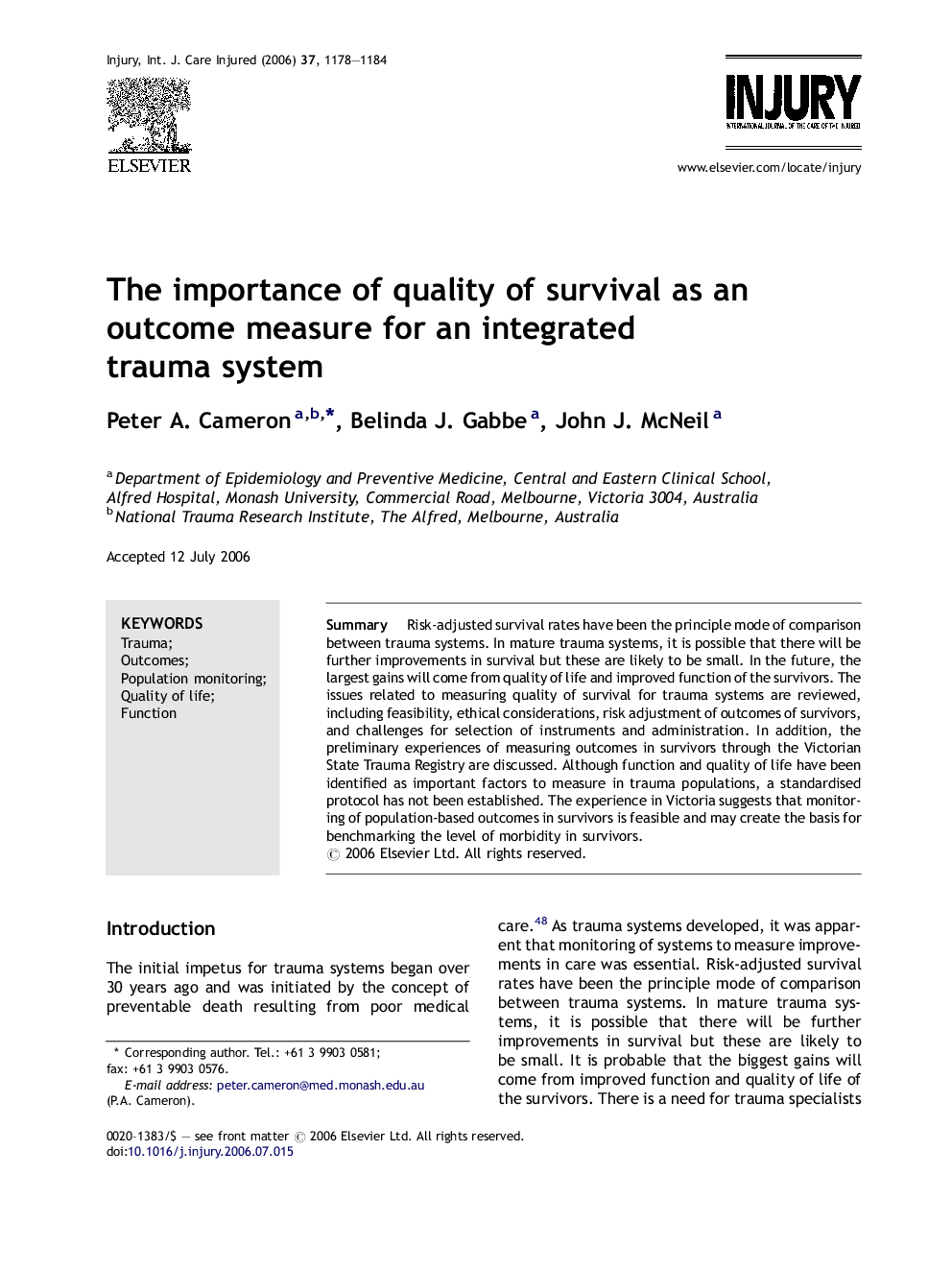| Article ID | Journal | Published Year | Pages | File Type |
|---|---|---|---|---|
| 3243189 | Injury | 2006 | 7 Pages |
SummaryRisk-adjusted survival rates have been the principle mode of comparison between trauma systems. In mature trauma systems, it is possible that there will be further improvements in survival but these are likely to be small. In the future, the largest gains will come from quality of life and improved function of the survivors. The issues related to measuring quality of survival for trauma systems are reviewed, including feasibility, ethical considerations, risk adjustment of outcomes of survivors, and challenges for selection of instruments and administration. In addition, the preliminary experiences of measuring outcomes in survivors through the Victorian State Trauma Registry are discussed. Although function and quality of life have been identified as important factors to measure in trauma populations, a standardised protocol has not been established. The experience in Victoria suggests that monitoring of population-based outcomes in survivors is feasible and may create the basis for benchmarking the level of morbidity in survivors.
